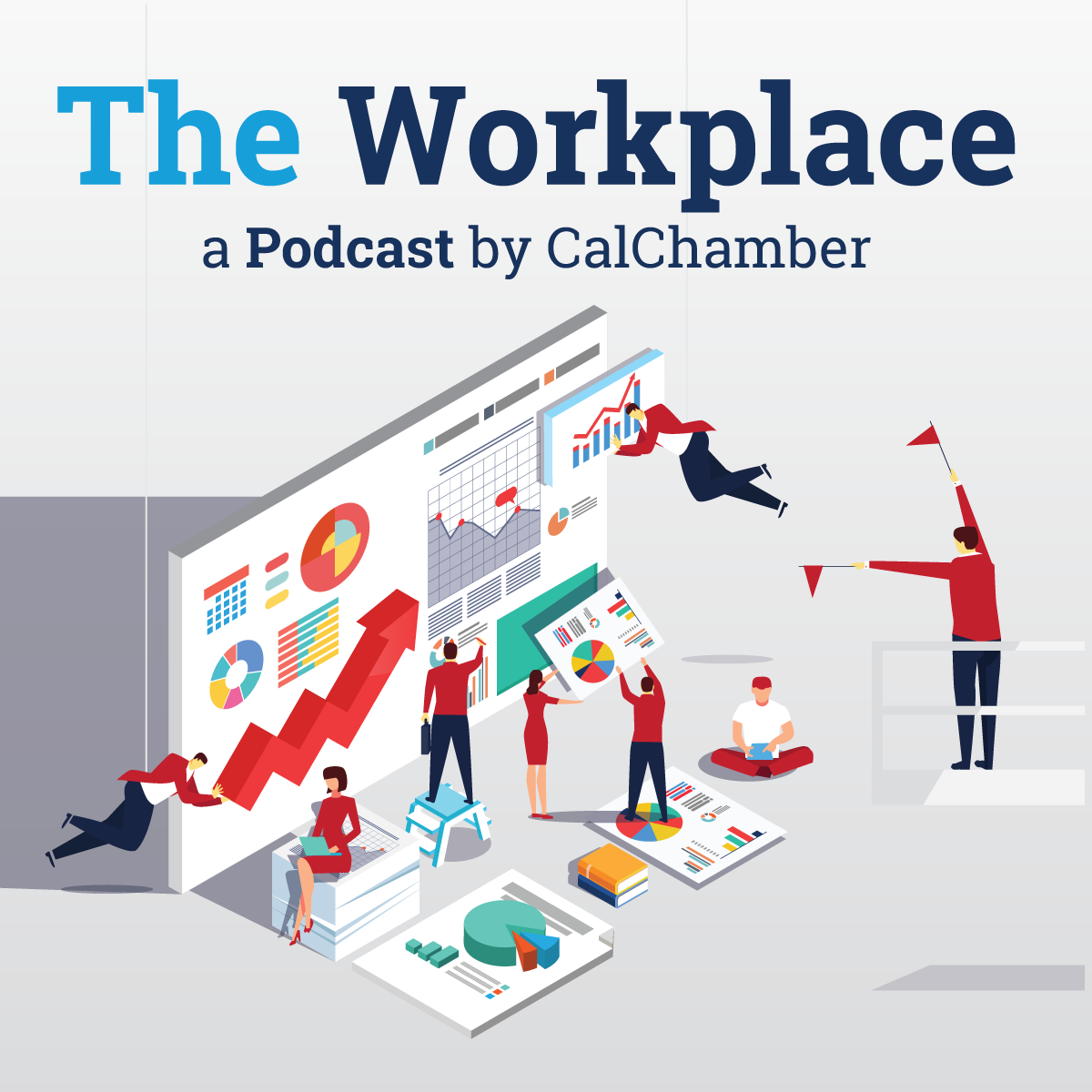
In Episode 173 of The Workplace podcast, CalChamber employment law expert Matthew Roberts sits down with Bianca Saad, CalChamber vice president of labor and employment for content, training and advice, to discuss how the employee performance review serves as a valuable business tool.
For many, Roberts says, performance reviews often are seen as a painful, bureaucratic task that gets in the way of managers’ and supervisors’ myriad priorities — especially when there are no major issues.
Competitive Advantage
“But with a tight labor market also accompanying a weird shifting economy,” he notes, “providing tangible positive or negative feedback to our employees will really help provide a competitive advantage for businesses over those who don’t.”
Performance reviews, Saad adds, are valuable in helping employers make employment decisions — decisions that can come with risk consequences. For this reason, employers want to have objective tools to review when deciding whom to promote, determining merit pay increases and taking disciplinary actions, including termination.
The performance reviews “can really end up playing this critical role if any of those employment decisions later on end up being challenged,” she says. “The documentation is key.”
And important to remember is that managers shouldn’t consider performance reviews as simply boxes to check, Roberts adds, sharing that following a great performance review, a friend of his had taken some leave for baby bonding and then for bereavement (which is now mandatory in California). But before returning from leave, he was fired for “performance reasons.”
“That’s why these things are so important,” Roberts says. “As evidence in litigation, these things need to be accurate and honest.”
Feedback
It’s important for employers to train whomever is conducting that performance review to be just that, Saad adds — even though one of the hardest parts about giving the performance reviews is that sometimes the feedback is negative. But doing so is important; if problems exist, they need to be documented, and it needs to be made known that this was discussed with the employee, who is then given the opportunity to make those improvements.
Also important is to conduct performance reviews with some regularity, whether that’s annual, which Saad notes should probably be looked at as the bare minimum, or on a more frequent basis, such as quarterly or even monthly.
“It doesn’t necessarily have to be a super formal, detailed 10-page document,” Saad adds. “You’re making that opportunity so the feedback can be given. And it’s documented. And if you have that done on a regular basis, then that’s where you’re giving that employee the opportunity to address deficiencies. And if those deficiencies aren’t corrected, then you’re on solid ground with maybe making some difficult decisions.”
But conducting performance reviews isn’t solely about documentation, evidence and lawsuits, Roberts says — the reviews also can help increase employee tenure. And they do so, Saad says, by giving strong employees who are considered star performers positive feedback, affirmation that they’re doing a great job and confirmation that they’re valued.
“All of these things are going to increase longevity — overall retention — with an organization,” she adds. “And as many can appreciate the time and effort that goes behind recruiting, when we can keep our strong employees, that is really something important.”
Set Goals
For employers that don’t yet have a performance review practice in place, Saad suggests starting by determining what you want to accomplish with performance reviews — what are your goals and main objectives?
Next, she says, is to assess the frequency for conducting performance reviews, as well as the style and nature of communicating the performance reviews, all of which may come down to the nature and needs of the business, the type of roles that you’re dealing with, and the organization’s overall culture.

